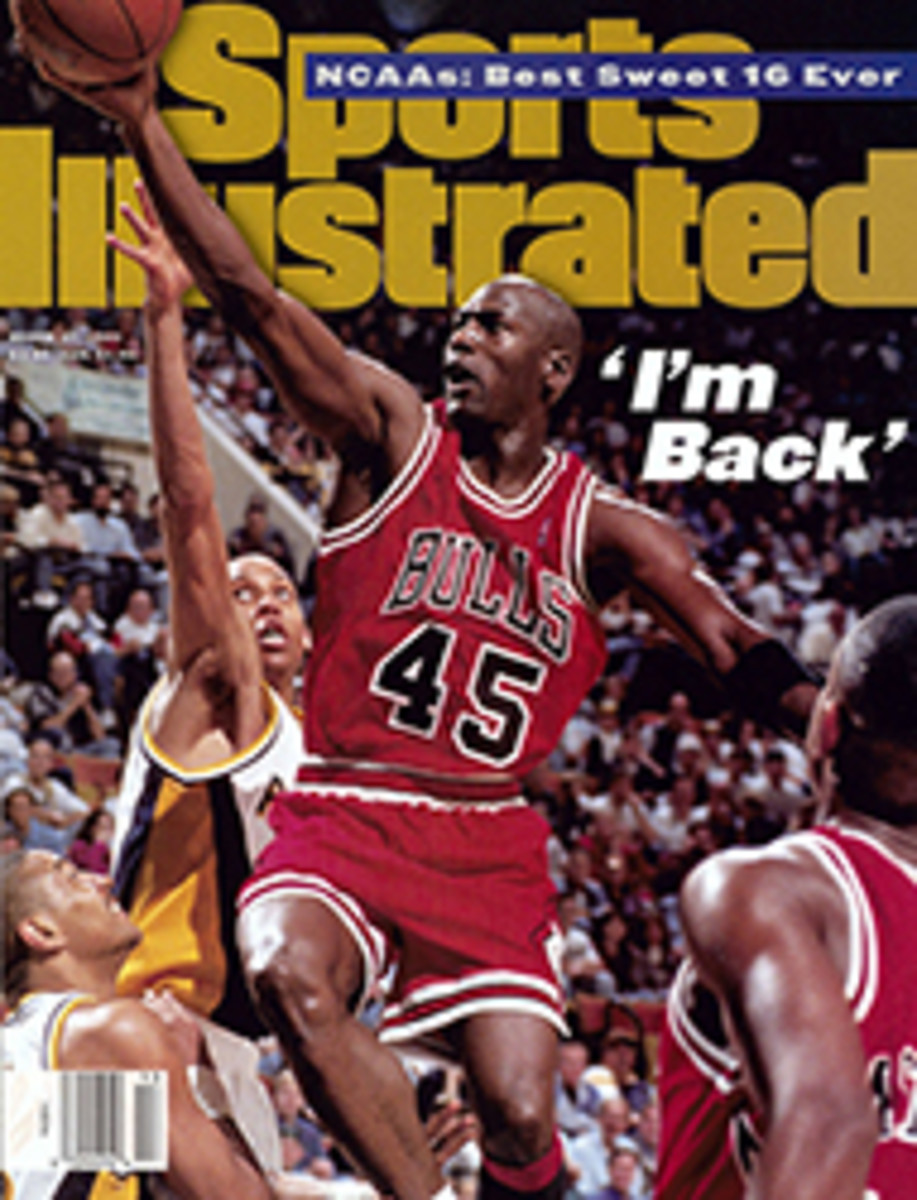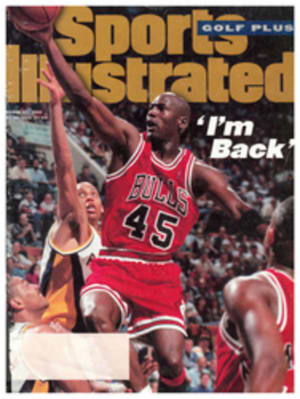
THE ONE THAT GOT AWAY A U.S. TEAM OF UNPRACTICED COLLEGIANS DIDN'T HAVE A BALL ON THE DIAMOND IN ARGENTINA
The baseball felt strange in Mike Maerten's hand. The seams
somehow were raised a little higher than the seams on the
baseballs he had known for all of his life. There seemed to be a
little more weight to the ball, too, a little more heft. There
also was an out-of-the-wrapper gloss on the ball. Didn't the
umpires rough up the balls before games here? Apparently not.
He stood on the mound at Ezeiza Stadium on March 11 and . . .
that was another thing. The mound. There really was no mound. He
stood on this flat circle of dirt in the middle of a green grass
infield in a ballpark on the outskirts of Buenos Aires, the
cramped stands filled with Argentine fans who were singing and
chanting and setting off skyrockets, and he was not ready for
any of this.
``The weather has been lousy at home,'' Maerten, a 22-year-old
St. John's University senior from Delran, N.J., said. ``We were
only able to practice outdoors twice before we came down here,
and both times were on the AstroTurf football field. I'd been
throwing all winter indoors, but it's not the same. You're not
working with runners on base. It's not a game.''
The letters USA across his baseball shirt weighed about a
thousand pounds apiece. He was no different from any of his St.
John's teammates. They were caught in a situation they could not
control, asked to do things they could not do. Had any U.S. team
ever been as unprepared for international competition as this
one? Had any U.S. team -- in this sport that is supposed to be a
national passion, a national source of pride -- been so
overmatched? This was a happy field trip gone wrong.
``A letter came around last May looking for a team to represent
the U.S. in the Pan American Games,'' St. John's coach Joe Russo
said. ``We jumped at the chance. We would have taken a trip in the
spring anyway. We were thinking about going to Fresno, California.
When we were selected, Fresno became Argentina.''
The timing of this year's Games provided the opportunity. Since
baseball became an Olympic sport again in 1984, the U.S. has sent
college all-star teams to the Pan Am Games, the players forming
the nucleus of the team for the upcoming Olympics. Those players
were free from commitments because the Games were held in the
summer. But this year the Games were in Argentina, on the other
side of the equator; the reversal of seasons made fielding a
competent U.S. team a game of chance. The high-powered NCAA teams
in the South and West had already begun their long schedules. An
all-star team was an impossibility, with too many schedules to be
adjusted, too many classes to be missed. St. John's, a sometime
Eastern college power, was the best available choice. The Red
Storm's regular-season schedule wouldn't begin until March 28,
against Rutgers.
``School is still in session, but we worked out everything with
the professors,'' Joe Russo's wife, Cecelia, the team's academic
coordinator said. ``Everyone here has homework. I've already given
three exams, and there's a study hall every night. On the way down
I told them to look out the window to see if they could spot the
dotted line when we passed the equator. They didn't bite.''
This first part of the trip was everything it was supposed to be.
The members of the team flew to Orlando, just like the other
members of the U.S. Pan Am delegation of more than 1,200 people in
38 sports. Uniforms were handed out, just like the ones worn by
Mark McGwire, Jim Abbott and other players who have represented
the U.S. in the past. The St. John's kids were just like Olympic
gymnast Shannon Miller or hurdler Roger Kingdom, all headed in the
same direction.
The dormitory was at the Colegio Militar, advertised as
Argentina's version of West Point. Most of the Red Storm players
had seen West Point, which they thought seemed more majestic, but
they could live with reality. No window screens? They made a game
of counting the mosquito bites on pitcher Todd Montesano's body.
The number was 70. Dinner was planned on the first off day in this
beef-happy country at a restaurant with a stuffed cow perched on
the front step.
If there was one disappointment, it was that the baseball players
were separated from the bulk of the U.S. contingent, which was in
the seaside city of Mar del Plata, 250 miles to the south, where
most of the Pan Am events were being held. Still, they shared
their dormitory with an international mix of bowlers and pistol
shooters and team handball players, which gave them a sense of
village life.
``We'd walk along the street, and kids would want our
autographs,'' Maerten said. ``It was the uniforms. They figured we
were from America, and we were famous. A kid the other day had a
baseball card of Ryne Sandberg or somebody and was pointing to it,
asking which one was him. We pointed out our second baseman. The
kid seemed happy.''
There would have been a trip to Mar del Plata for the opening
ceremonies, a march with all of the athletes, but that was
canceled because the U.S. had to play the first game of the
tournament against Argentina the same day as the ceremonies. The
baseball had to begin.
Oh, yes, the baseball.
Argentina had not won a baseball game in the Pan Am Games in 44
years. This was because Argentina had not fielded a baseball team
in the Games in 44 years. The only full-sized baseball stadium in
the country -- with its 393-foot foul lines, 485-foot power
alleys and astounding 520 feet to dead centerfield -- was the
Ezeiza field that was being used for the Games, and it had not
been ready for competition until about three days before the Games
began. The Argentine team was an all-star group collected from
around the country five years ago and developed in foreign
tournaments with the stated purpose of being ready for this
moment.
Maerten fidgeted. He did not feel right. The crowd of 3,200 was
just about the biggest crowd that had ever watched him pitch. He
hadn't thrown in a game since the fall. He wished this were
happening a month from now, two months. He wished there were a
true mound. He wished. . . .
The first Argentine batter walked.
The second singled.
As did the third.
As did the fourth.
The inning ended with 11 Argentines going to the plate, five runs
scored. Maerten settled down after that, but Argentina was a 6-4
winner in the end. The Argentines in the stands, not accustomed to
winning baseball games, still knew how to celebrate. They danced
and sang as happily as they later would after wins over the U.S.
in soccer and volleyball and tennis and basketball, 68-67 over a
collection of mostly second-line players from the Continental
Basketball Association (also selected by default because of the
timing of the Games). Never mind that the U.S. was going about the
business of piling up 94 medals in sports like gymnastics and
swimming and weightlifting for this first week of competition. The
newspapers and television were filled with the amazing story about
how Argentina had ``humiliated the U.S. in baseball, its national
game.'' Not much mention was made that the team was from St.
John's. No mention was made of the two days of practice on a cold
AstroTurf football field.
The next game was against Mexico. A junior from Staten Island,
Anthony Sagnelli, started. He walked five of the first seven
batters he faced, and Mexico scored four times on the way to a 7-2
win. The U.S. had three runners picked off third base. The third
game was against Puerto Rico, which won 8-1. A chance at the medal
round was gone now, the first time in 12 editions of Pan Am
history that a U.S. baseball team did not qualify, so there were
altered hopes. There was one more game, against Guatemala,
followed by at least three in the consolation round.
``We wanted to win the next four,'' Joe Russo said.
``We had the kids look up Guatemala on the map,'' Cecelia said.
``There it was, sticking out in Central America.''
Guatemala, alas, was the worst. An eight-run third inning -- all
eight runs scored with two outs as the U.S. made four errors --
lifted the Guatemalans to a 14-4 win. The game was halted after
seven innings as a result of the amateur baseball ``mercy rule,''
which stipulates that a game be called when one team leads by 10
runs at the end of the seventh. ``This was embarrassing,'' Joe
said. ``We were atrocious.''
``Was that the first time the mercy rule has been invoked against
the U.S. in the Pan Am Games?'' he was asked.
``I don't know about that,'' he said. ``I do know it's the first
time it's ever been invoked against St. John's.''
The U.S. lost two more times, 9-2 to the always fearsome
Netherlands Antilles in the consolation round and 4-2 to Brazil.
That opener against Rutgers seemed far, far away.
COLOR PHOTO:PHOTOGRAPH BY SIMON BRUTY/ALLSPORT It's the Wheel ThingGil Cordoves of Cuba, here tumbling during a men's sprint, wasn't the only one to take a fall at the Pan American Games (page 42). [photo from T of C--Gil Cordoves falling over on his bike]
COLOR PHOTO:PHOTOGRAPHS BY AL TIELEMANS Gary Villacres and his mates couldn't fill the gap between the 0-6 U.S. and its foes. [Gary Villacres running to get baseball]
TWO COLOR PHOTOS:PHOTOGRAPHS BY AL TIELEMANSThe Americans even got in Dutch against the Netherlands Antilles.[Netherlands Antilles player scoring as the catcher for the United States team attempts to catch ball; U.S. player standing in the outfield under scoreboard that shows the U.S. trailing the Netherlands Antilles 0-5 in the sixth inning]

